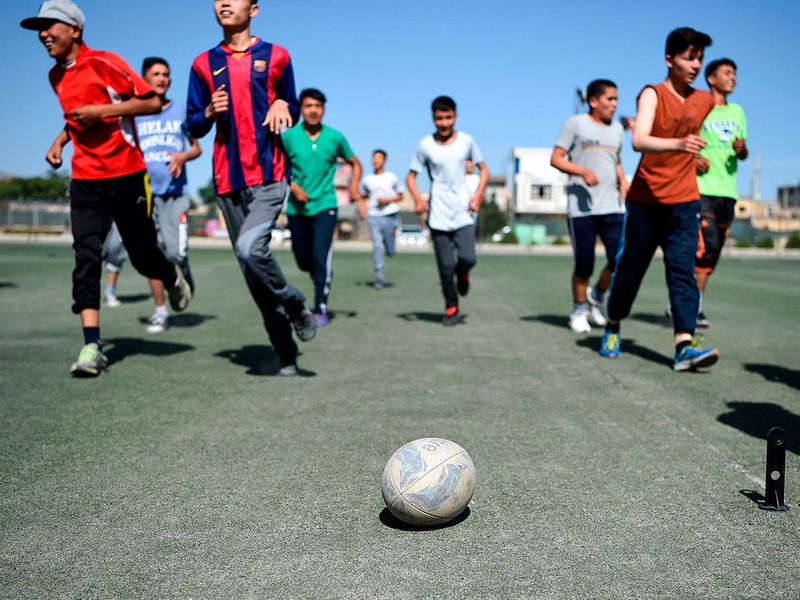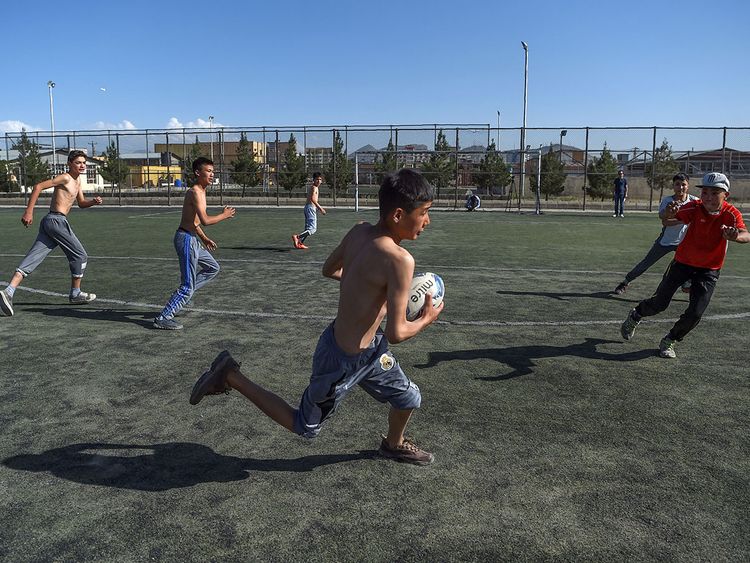
Kabul: Thirty or so teenagers kick up dust as they sprint around a field in Kabul, focused intensely as they chase an oval ball in the sweltering heat.
The players are sweating profusely but that has not dampened their enthusiasm for their new-found sport: rugby.
Essentially unheard of before the arrival of international forces, the sport has slowly begun to pick up steam in Afghanistan, where football, cricket and body-building are better known.
They have the skills, they have the fitness, they have the strength. You get some very big strong Afghans and I think they would be also good at fifteens. Eventually, I am sure Afghanistan will produce a strong 15-a-side rugby team.
"I love the tackles and passes of rugby," said 16-year-old Lutfullah Kazemi, a high-school student who previously had been a football fan. He was drawn to the game largely because of its novelty, but stuck with it and now dreams of an international career.
In a country that has been at war for four decades, tough-guy sports including body building and taekwondo already have found a loyal following.
And thanks to the efforts over several years by die-hard fans, awareness around rugby is growing.
Stephen Brooking, a Briton who advises the Afghan Rugby Federation, is convinced Afghans have the characteristics to shine at the sport, notably physical conditioning.
For the moment, the focus is on seven-a-side rugby, known as rugby sevens, as it is the best way to build skills and is easier to understand than 15 a side.
"They have the skills, they have the fitness, they have the strength," Brooking told AFP.
"You get some very big strong Afghans and I think they would be also good at fifteens. Eventually, I am sure Afghanistan will produce a strong 15-a-side rugby team."
But conditions are less than ideal. Chunks of synthetic grass have been torn from the Kabul pitch, making tackling dangerous.
Only touch rugby, which is less physical, is allowed. Otherwise the players risk injury, explained Abdul Habib, the trainer of this team called "Qahramanan" - meaning "champions" in Dari, the main Afghan language.

Still, the sport is growing. Today, 18 teams have been formed in schools and universities around Kabul and six more in provinces outside the capital, said Aref Wardak, the rugby federation's spokesman.
Three youth and adult championships are supposed to be created within months, and a women's team has even been started in Kabul with the hope of others coming soon.
'Where's the goal?'
Afghanistan is not yet a member of the World Rugby governing body, but has received support from the Asian federation, which helps it train referees and coaches.
The national sevens side, made up of Afghan expatriates, participated in the Asian Games in Indonesia last year, narrowly missing out on the quarter finals.
To build a future for rugby, the federation is focusing on youth, starting in the schools.

"We must first convince teachers there's an interest in rugby, and explain the values of this gentleman's sport that is rooted in rules and a respect for the enemy. And the kids need to find it fun," Wardak said.
Habib, who started coaching the Qahramanan team about four years ago, said it was a difficult sport to learn.
"It took me about two months to teach them the rules," he said.
Wardak, the rugby federation spokesman, recalled his first contacts with college students.
"They would ask me where the goal was and why we had to pass the ball backward - and they thought a scrum was the start of a fight," he said.
Brooking said the thing players need the most in Kabul is pitches. Not easy to come by in a city experiencing a demographic boom.
A plot of land about 10,000 metres square (2.5 acres) will soon be allocated for rugby practice, according to the Afghan Rugby Federation, though funds are still lacking to construct any facilities or put in a decent turf.














